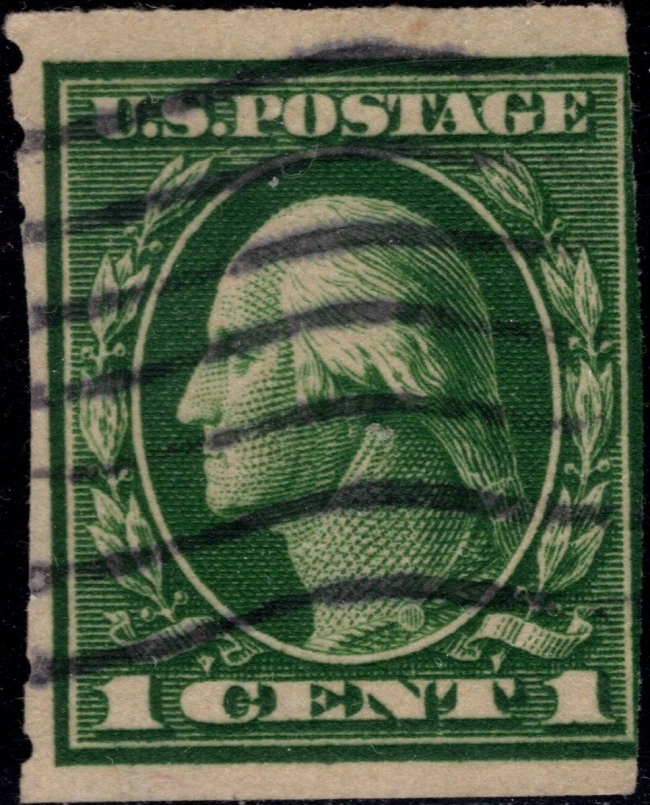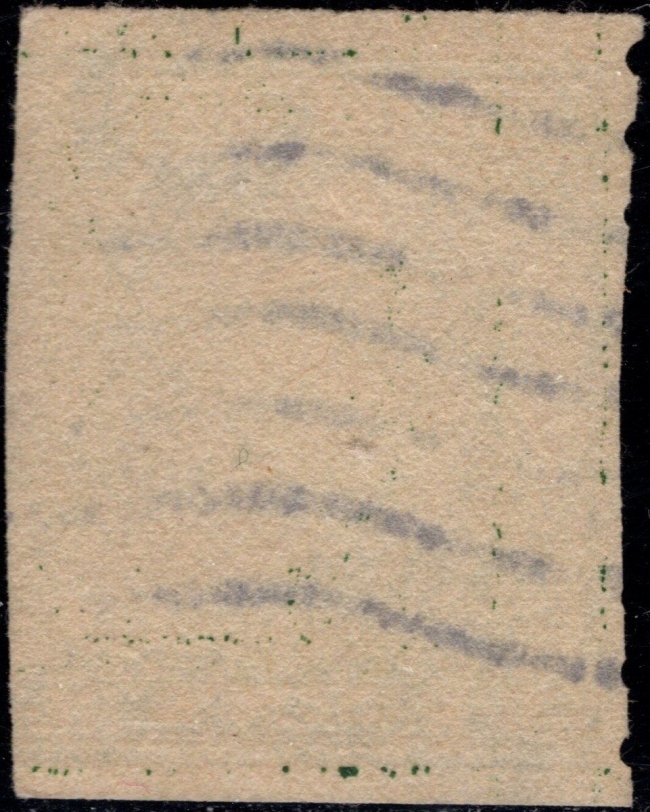Scott 412?
Before I throw this in my giveaway bin, would you guys please help educate me about fake perfs? I am reasonably sure that this is a scott 412. Scott says this is a common stamp for faking and this specimen seems like a good candidate because it barely presents enough info to look at for comparison. To be a fake I think it would have to have had the top and/or bottom perfs trimmed off and the sides re-perfed to 8.5. The bottom is clean and straight but the top while straight is in rough shape. The few remaining perfs on the left side fit the gauge at 8.5 but don't really appear to be in a straight line from top to bottom. The only other piece of information I have that you can't see for yourself is the watermark. I could not find a watermark, but single lines are often hard for me to find. If it is a 412, the design and perfs tell the story and watermarking isnt really necessary. Any help/opinions to offer?





Comments
First, 1c Green, Washington, Flat Plate printing, Single Line Watermark (Top of S in upper left corner (back) of the stamp, inverted and reversed). So if we're thinking it might be a fake, we then look at possibilities, we find it's a very narrow field.
This can't be an issue of trimmed perfs as some have mentioned, because there is no stock with 8.5 perf. The are only a few options for faking this coil.
(For those skeptics about the watermark, here's an image) Look at the upper left corner:
So this leaves us with few possibilities. The best candidate for a fake is a 408, or better still an 408 imperf coil (408V or 408H, where 408H would be the main desirable base material, because it would give you parallel coils at top and bottom). Then a fake perf would be added.
While I can't specifically verify the perfs because most of them are missing, there are still clues that suggest the stamp is authentic. First of all, as mentioned the parallel top and bottom, and parallel with the design. There are wide margins on both side, which would not be present if perforations were cut off. What we can also see from the perf indents is that they are offset on each side. The left side of the stamp has only a few traces of perf, but they are out of alignment to the other side, which is the expectation in a flat plate printed stamp.
For fakers, this wouldn't be the desired approach. Fakes typically "look too good". This would at best look like a damaged 412, which isn't the objective of the fakers. Another interesting point is, this stamp has a cut pattern on each side. This is not the result of cutting it off a cover, because the curve matches almost exactly. Realize coils are on rolls. And rolled stamps still have to be separated from the coil to be placed on an envelope. Some "creative people" made their own devices for separating the coil stamps. This appears to have been cut by the same cutter on both sides of the stamp, rather than the traditional "tearing" the stamp one by one off the roll.
It doesn't make sense to reperforate a perf 10V stamp, as it's CV is $45 for used, and a 412 8.5V CV is $25 for used. Another objective of the "faker" is to fool people into believing the stamp is of greater value than it actually is.
408 CV Used: $1
408H CV Used: $5
These make good candidates for faking either of these two stamps:
412 CV Used $25
443 CV Used $45
A 412 this badly damaged wouldn't be worth faking from even a 408H as the CV would be expected to be around the same amount.
Given the other clues about the quality of the coil edges (and yes the top is rough, but I have seen this on many other coils, I have the theory that this is due to a dull coil stripper), it does not negate it as a coil.
Verdict: Used 412, damaged
While I'm glad you have gotten value out of this, I don't think there's a lesson in fake perfs here really. These perf's aren't fake, so any "good lesson" in fake perfs would have to include... some actual fake perfs along side some real ones.
Did you find your watermark in fluid? This is a more valuable lesson in basics.
The Signoscope would be your best friend here too. The one advantage it has is that, the marks don't fade as they are in the fluid, and this one should be easily visible in it.